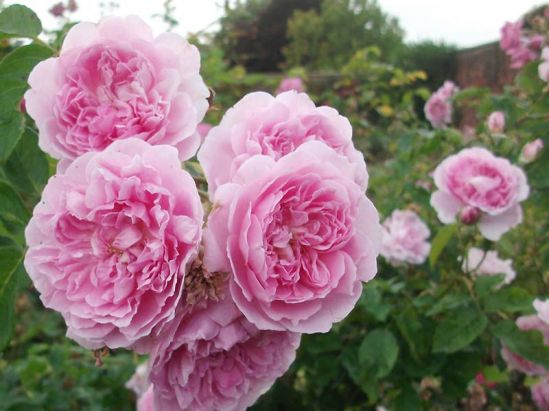Margaret Inwood | May 08, 2019
A rose is one of the most beautiful flowers in the garden and in bouquets. It is also one of the oldest plant species with fossil remains that indicate it was around in primitive form over 32 million years.
The best time to plant roses is in the spring, as early as possible and as soon as the frost is out of the ground. Roses thrive best in full sun but six hours daily is also satisfactory. The soil should be well drained, with no competition from tree roots. Roses will do well in clay soil or other types, as long as a good amount of organic matter is worked into the soil. Well-rotted manure can also improve the soil as well as peat moss and bone meal. Roses are very heavy feeders and organic matter adds to the moisture retaining quality of the soil. The holes should be dug large and deep enough so the roots can be spread out easily. The union or crown should be at or 5 cm below the surface of the ground. Plant your new rose immediately to keep it from drying out. If you must delay planting, place the rose bush in a bucket of water for a few days.
Once roses are established and growing well, top dress with compost and work some granular fertilizer into the soil. Apply liquid fertilizer mixed with water, according to package directions every week until August 1st. Prune at planting time by cutting back the tops, leaving only three strong branches 12-15 cm above the ground. Remove any broken or crossing branches. Roses that receive good nourishment and are well cared for are least prone to disease.
Many varieties of roses are available in gorgeous solid and bicolours. To protect your roses in winter, mound up the soil around them. To prevent mice and rodents from overwintering around your roses, mound shredded leaves or straw around them once the ground has frozen.
There are many types of roses and an infinite number of varieties available:
Tender Rose Types (require some form of winter protection)
• Floribunda means the abundance of flowers. These roses bloom with clusters of flowers from early summer until the first killing frost. They are hardier than Hybrid Tea Roses but may still need winter protection.
• Hybrid Tea Roses have large flowers and long pointed flower buds and usually produce only one flower per stem. They have a large range of colour and bloom almost continuously, making them a valued cut flower. They require a great deal of winter protection.
• Grandiflora means large flowers. These roses have large flower in small clusters. They are a cross between Floribunda and Hybrid Teas and are good for cutting.
• Miniature Roses look like smaller versions of hybrid teas and most varieties bloom all summer. They are ideal for containers and can be used as a house plant in a sunny window. Hardy Rose Types (Can survive cold winters without protection)
• Explorer Series developed by Agriculture Canada to survive Canadian winters. They can be in the form of low ground covers to shrubs and climbers
• Rugosa Roses have recurrent fragrant blooms with clean healthy foliage. They are available as species and hybrids. They grow as dense shrubs and some varieties sucker to form a spreading colony. Virtually disease and pest free.
• Old Garden Roses or antique roses are known for their stunningly beautiful, fragrant flowers. This is a loose grouping that includes roses that have been cultivated for centuries. They are tough and robust.
• Parkland Series were developed by Agriculture Canada at the research station in Morden Manitoba. They were bred specifically for prairie conditions by crossing native prairie roses with hybrid tea roses. Most varieties bloom repeatedly until frost after an initial first flush.
Margaret Inwood is a member of the Lanark County Master Gardeners. Want to know more about the group or ask a gardening question? Visit our website at www.lanarkmg. blogspot.com or contact us at This email address is being protected from spambots. You need JavaScript enabled to view it.
More Stories
- The Sun Shines On The Parham Fair
- Creating Your Own Weather, Forever and Ever
- Silver Lake Pow Wow Set For A Big Year
- South Frontenac Receives Substantial Provincial Grant for their Verona Housing Project
- South Frontenac Council Report - August 12
- Dumping To Be Curtailed At Loughborough Waste Site
- Central Frontenac Inching Towards Increasing Severance Opportunities
- Addington Highlands Council Report - August 12
- Addington Highlands Council Report - August 5
- Addington Highlands Council Report - August 12

